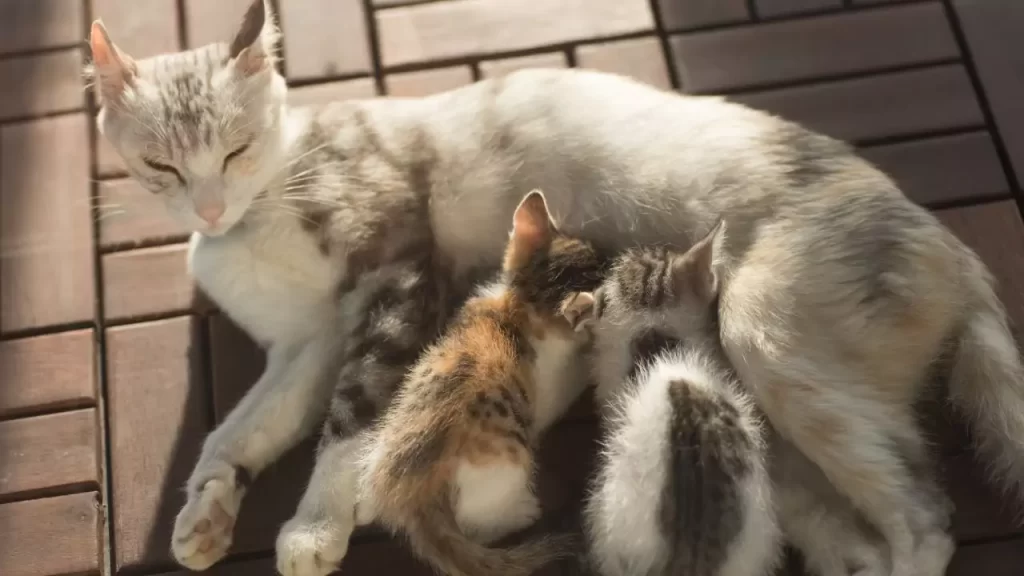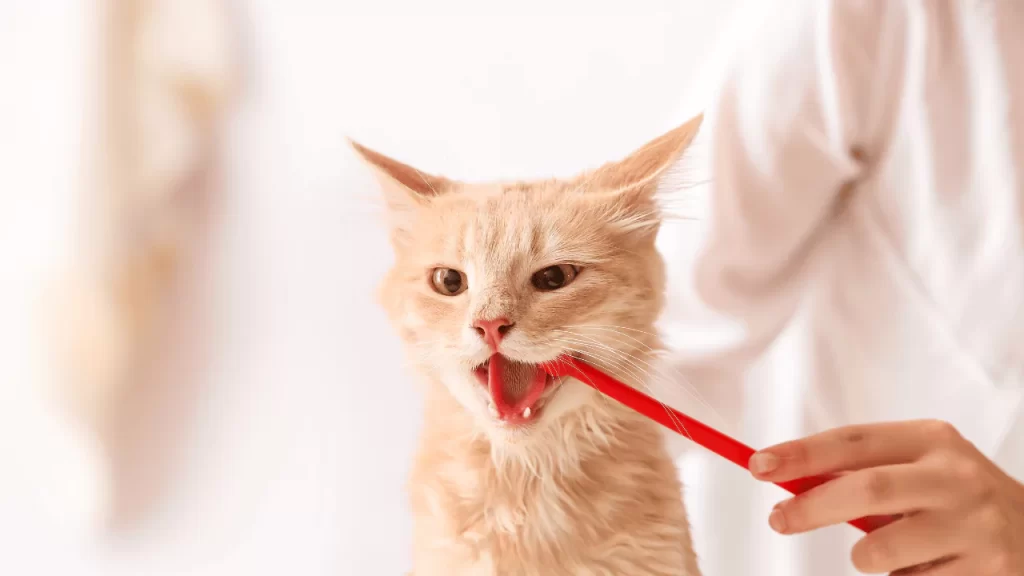Author: Dola Singha
Dola Singha is a cat enthusiast with a lifelong love for feline companions. She is an expert in all aspects of cat care, from nutrition and behavior to training and health.
Cats are considered fully grown when they reach 18 months of age, equivalent to the maturity level of a 21-year-old human. However, the growth timeline can vary among different breeds. Some cats may continue to grow in size between 12 to 18 months, with certain breeds reaching their full size only by the age of 2 years. Factors That Affect When Cats Stop Growing There are four main factors that affect when cats stop growing: gender, spaying and neutering, diet and lifestyle, and breed. Gender Male cats tend to grow larger and faster than female cats, as they have more…
Cats can get worms from various sources, such as eating infected prey, coming into contact with contaminated feces, or being born with them. Worms are parasites that live inside the cat’s intestines and can cause various health problems, such as vomiting, diarrhea, weight loss, and anemia. Some worms can also infect humans and other animals, so it is important to prevent and treat worm infestations in cats. Ways Cats Can Contract Worms There are several ways that cats can contract worms, depending on the type of worm and the cat’s lifestyle. Some of the most common ways are: Types of…
Cats can usually stay in a trap for up to 24 hours without health risks. However, some recommend not leaving a cat in a trap for more than 6–8 hours. Trapping a cat is a stressful and potentially dangerous experience for the animal, and it should be done with care and compassion. Trapping a cat is usually done for the purpose of Trap-Neuter-Return (TNR), a humane and effective method of managing feral cat populations. TNR involves trapping, spaying neutering, vaccinating, and returning the cats to their original locations. TNR helps reduce the number of unwanted kittens, improve the health and…
Cats shouldn’t be locked up in a crate for more than six hours at a time. If you crate your cat for more than a quarter of the day, it can get nervous and scared, which is bad for its mental health. For traveling, the Animal Humane Society says that a crate is a good option for shorter trips, but not for trips longer than six hours. For longer trips, you can let your cat out of the carrier periodically to use the litter box and get water. Cats need to be mentally and physically stimulated because they are curious…
The number of teeth in cats varies depending on their age. Kittens have a total of 26 teeth, but adult cats have a total of 30 teeth. Cats have teeth that are specifically adapted to capture and consume meat. They have four types of teeth: incisors, canine teeth, pre-molars, and molars. In this article, we will explore the types of teeth in cats, how many teeth they have, and why dental care is important for them. Types of Teeth in Cats Cats have four types of teeth, each with a different function and shape. How Many Teeth Do Cats Have?…
The length of time a cat can stay on prednisone depends on several factors, including: Generally, here’s a guideline: Understanding Prednisolone for Cats What are Steroids? Steroids are a group of natural or synthetic hormones that have different functions in the body. Some steroids, such as cortisol, are produced by the adrenal glands and regulate inflammation, metabolism, and stress response. Other steroids, such as testosterone and estrogen, are produced by the gonads and control sexual development and reproduction. Types of Systemic Steroid Medications Systemic steroid medications are drugs that mimic the effects of natural steroids and can be taken orally…
According to The Anti-Cruelty Society, you should not keep your cat in a carrier for an extended period of time. Up to 15 minutes should be fine. Most cats find being in a carrier stressful, so it’s best to keep their time in it as short as possible. If your cat needs to stay in the carrier for more than a couple of hours, you’ll need to offer them some food and water. It’s also best to cover it with a blanket to keep them calm. Factors Affecting How Long a Cat Can Safely Stay in a Carrier Guidelines for…
The typical treatment duration for a cat on antibiotics, specifically amoxicillin, is around seven to ten days, depending on the severity of the infection. It is crucial to administer the medication at the prescribed dosage for the entire duration recommended by your veterinarian, typically 10 days to 2 weeks. Even if the cat shows signs of improvement, discontinuing the antibiotics prematurely may lead to unresolved infections. Continued overuse of antibiotics can have long-term consequences, reducing their effectiveness in treating bacterial infections in both humans and animals. Understanding Antibiotics for Cats What are Antibiotics? Antibiotics are drugs that kill or inhibit…
Most cats are content being left alone for up to eight hours while you’re at work. However, some say that the maximum amount of time you should leave them alone is around 12 hours. Cats can experience separation anxiety, which is an emotional response of stress, fear, and/or sadness when they are away from the person or other animal with whom they are bonded. Cat separation anxiety can be minor to severe and hard to detect. To help your cat feel more comfortable, you can try leaving a TV or radio on at low volume. Cats can pick up noise…
Cats possess the ability to hold their breath at will, as evidenced by anecdotes shared on Reddit. According to a user’s observation, their cat demonstrated this skill by holding its breath for a notable duration, specifically ranging from 20 to 30 seconds. This intriguing behavior adds to the feline repertoire of unique traits, showcasing their adaptability in various situations. Physiology of Cat Breathing Respiratory System The cat’s respiratory system includes the nose, mouth, pharynx, larynx, trachea, bronchi, bronchioles, and alveoli. Air enters and leaves the respiratory system through the nose and mouth. The pharynx joins the nose, mouth, and larynx.…













